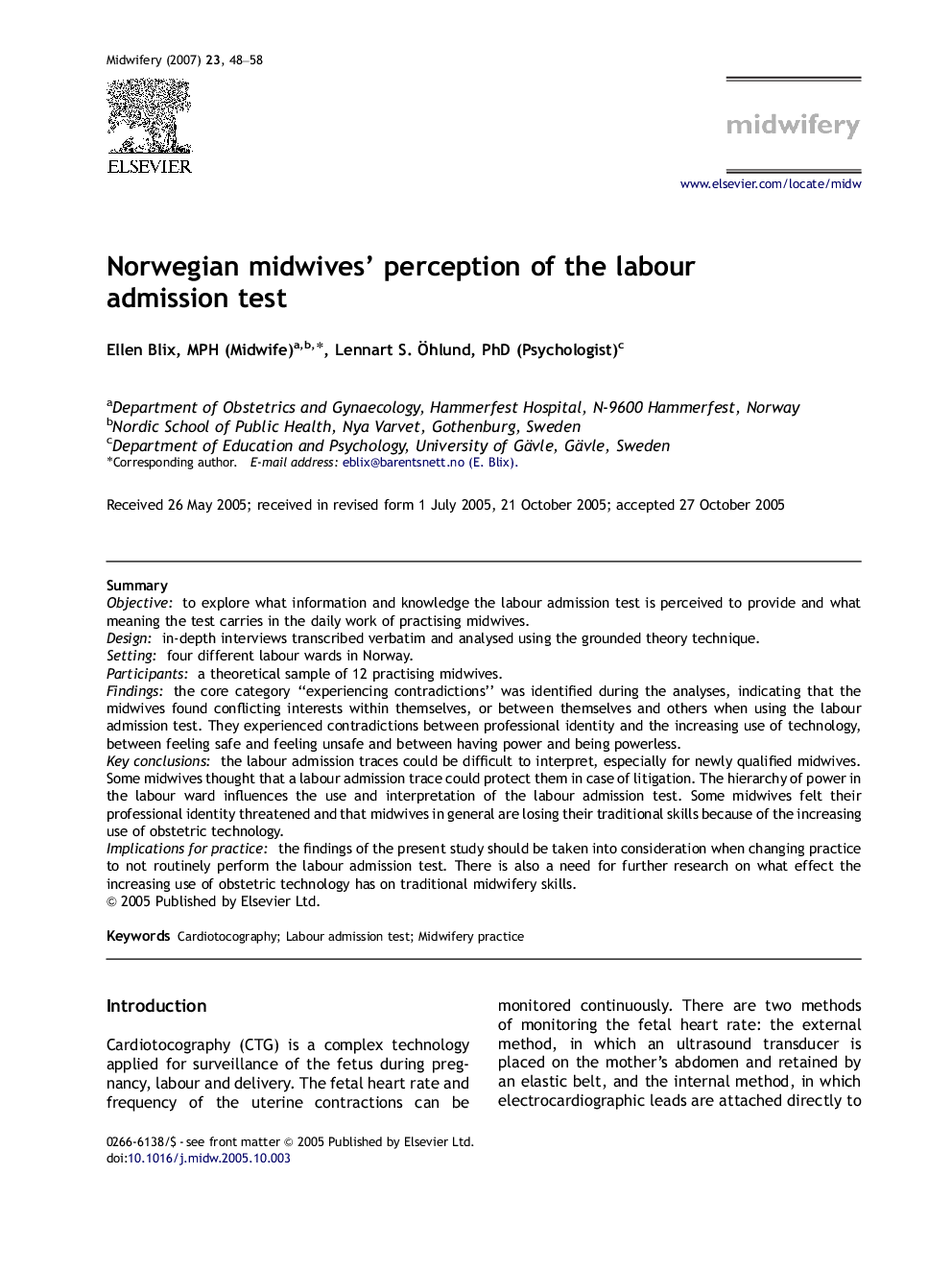| Article ID | Journal | Published Year | Pages | File Type |
|---|---|---|---|---|
| 1085246 | Midwifery | 2007 | 11 Pages |
SummaryObjectiveto explore what information and knowledge the labour admission test is perceived to provide and what meaning the test carries in the daily work of practising midwives.Designin-depth interviews transcribed verbatim and analysed using the grounded theory technique.Settingfour different labour wards in Norway.Participantsa theoretical sample of 12 practising midwives.Findingsthe core category “experiencing contradictions” was identified during the analyses, indicating that the midwives found conflicting interests within themselves, or between themselves and others when using the labour admission test. They experienced contradictions between professional identity and the increasing use of technology, between feeling safe and feeling unsafe and between having power and being powerless.Key conclusionsthe labour admission traces could be difficult to interpret, especially for newly qualified midwives. Some midwives thought that a labour admission trace could protect them in case of litigation. The hierarchy of power in the labour ward influences the use and interpretation of the labour admission test. Some midwives felt their professional identity threatened and that midwives in general are losing their traditional skills because of the increasing use of obstetric technology.Implications for practicethe findings of the present study should be taken into consideration when changing practice to not routinely perform the labour admission test. There is also a need for further research on what effect the increasing use of obstetric technology has on traditional midwifery skills.
